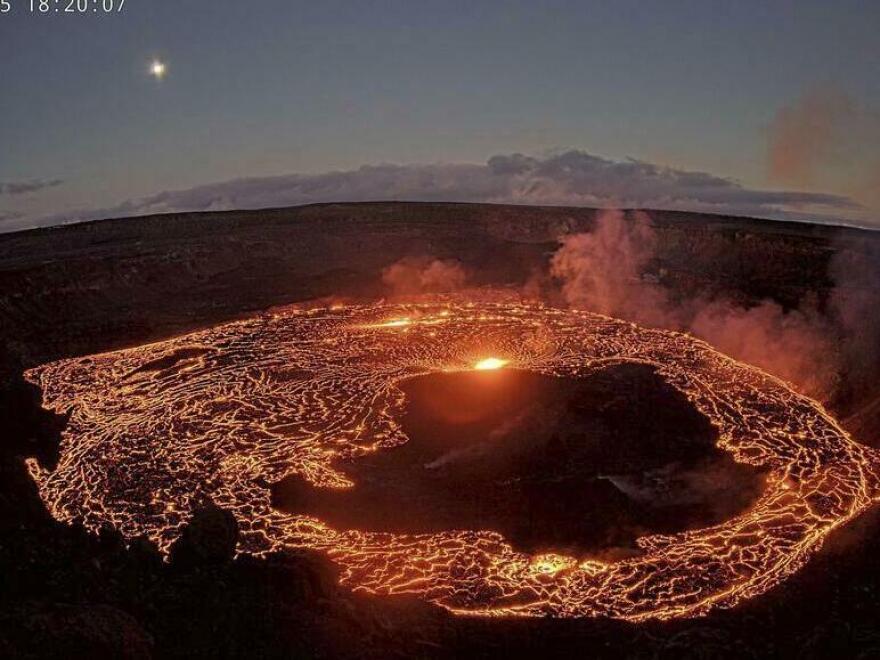HONOLULU — Hawaii's Kilauea began erupting inside its summit crater Thursday, the U.S. Geological Survey said, less than one month after the volcano and its larger neighbor Mauna Loa stopped releasing lava.
The Hawaiian Volcano Observatory detected a glow in webcam images indicating Kilauea had begun erupting inside Halemaumau crater at the volcano's summit caldera, the agency said.
Kilauea's summit is inside Hawaii Volcanoes National Park and away from residential communities.
Earlier Thursday, the U.S. Geological Survey raised the alert level for Kilauea due to signs that magma was moving below the summit surface, an indication that the volcano might erupt.
Kilauea is one of the world's most active volcanoes. It last erupted for 16 months starting in September 2021. For about two weeks starting Nov. 27, Hawaii had two volcanoes spewing lava side by side when Mauna Loa erupted for the first time in 38 years. Both volcanoes stopped erupting at about the same time.
During the twin eruption, visitors to Hawaii Volcanoes National Park were able to see lava from both eruptions at the same time.
"It was a beautiful eruption, and lots of people got to see it, and it didn't take out any major infrastructure and most importantly, it didn't affect anybody's life," said Ken Hon, the Hawaiian Volcano Observatory's scientist in charge.
Mauna Loa lava didn't pose a threat to any communities, but got within 1.7 miles (2.7 kilometers) of a major highway connecting the east and west sides of the island. A 2018 Kilauea eruption destroyed more than 700 residences.
The observatory planned to continue monitoring the volcanoes for signs of renewed activity. Hon previously said there is generally a three-month "cooling off" period before scientists consider an eruption to be complete.
It was unclear what connection there could be to the volcanoes stopping their eruptions around the same time. The volcanoes can be seen at the same time from multiple spots in Hawaii Volcanoes National Park near Kilauea's caldera.
Scientists planned to look at data to study the relationship between the two volcanoes, Hon previously said.
For Native Hawaiians, volcanic eruptions have deep cultural and spiritual significance. During Mauna Loa's eruption, many Hawaiians took part in cultural traditions, such as singing, chanting and dancing to honor Pele, the deity of volcanoes and fire, and leaving offerings known as "hookupu."
Copyright 2023 NPR. To see more, visit https://www.npr.org. 9(MDA4MzM1MjM1MDEzMTg5NTk0MzNmOTQ5MA004))


